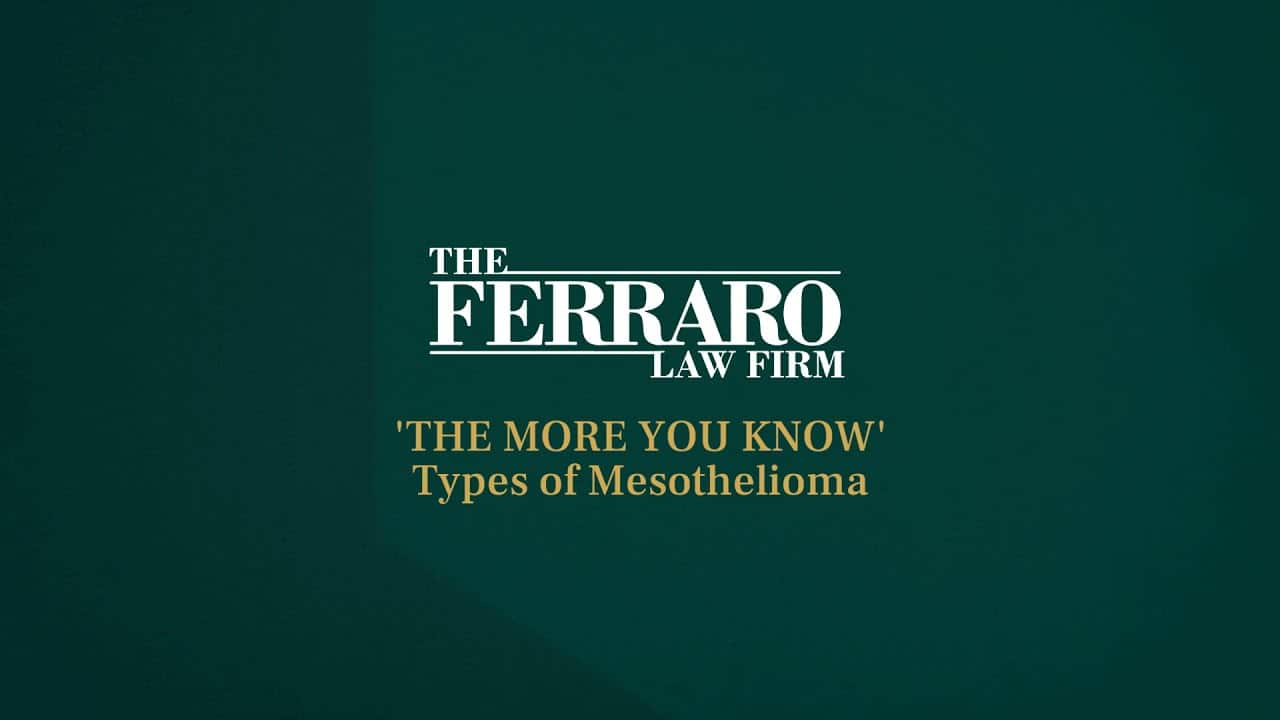If you were seriously injured, remember that it is crucial to choose the right law firm to represent your interests. We have been doing this for more than three decades, and have the resources you need to challenge any opponent.
Take-Home Asbestos Case Nets $3.5M Verdict for Mesothelioma Victim’s Family
Most lawsuits stemming from a mesothelioma diagnosis are filed by or on behalf of workers who were exposed to deadly asbestos dust on the job.

However, a growing number of successful claims are being brought by immediate family members of those workers in cases we sometimes refer to as “take-home asbestos.” The moniker is fairly straightforward in that it refers to the asbestos dust that workers “took home” – primarily in their clothing and in their vehicles. Spouses and children were at the highest risk of exposure to take-home asbestos, since they would have encountered those particles day in and day out, every time they got in the vehicle, laundered the clothing, or even just received a hug.
Many defendants have vehemently argued in these cases that they owed no duty of care to these plaintiffs, since they had no special relationship with family members of workers whose companies used their products or materials. In some cases, this argument has proven persuasive to courts.
Last year, there was the case of Gillen v. The Boeing Co., before the U.S. District Court of the Eastern District of Pennsylvania. That case was brought by a wife who contracted mesothelioma after washing her husband’s asbestos-covered clothing every day after he returned from work from an airplane manufacturer. The defense successfully argued it owed no duty of care to third parties for exposure.
But there have been a number of recent cases in which courts have found in plaintiffs’ favor.
Take for example the recent case of Brandes v. Brand Insulation in Seattle, WA. In that case, jurors awarded $3.5 million to the widow of a man who died of asbestosis years earlier. She was later diagnosed with mesothelioma and died just days before closing arguments in the case.
Her husband, a refinery worker, carried asbestos home on his clothes every day when he returned home from work. Each day, the plaintiff, a licensed practical nurse and homemaker, laundered his dust-covered clothing.
Mesothelioma is caused by exposure to asbestos, which was present in thousands of products throughout the 20th century. The disease does not manifest until usually 30 to 50 years after exposure. The plaintiff was 80 when she succumbed to the disease. And to be clear: companies that made these products were aware of the dangers the dust posed, and yet they failed to protect workers or to warn them of the danger so they could make informed decisions.
Many times, we see people in their 30s and 40s who are diagnosed with the disease after being exposed to it as children. Usually once a diagnosis is made, the disease is fatal within just two to three years.
Originally in this case, there were seven defendants. All but one settled out-of-court prior to trial.
Population statistics indicate we will continue to see more of these “take-home” asbestos cases because asbestos was still fairly widely used in building materials and other products at least through the 1970s.
Since these second-hand asbestos exposure cases are more complicated in terms of causation and duty of care, it is essential for victims to contact an experienced legal advocate.
Table of Contents
Frequently Asked Questions: Mesothelioma & Asbestos
What is asbestos?
Why is asbestos dangerous?
What are asbestos-related diseases?
What causes mesothelioma?
What are the different types of mesothelioma?
What are common mesothelioma symptoms?
Do I qualify for compensation if I have mesothelioma?
What is the life expectancy for someone with mesothelioma?
Do I qualify for compensation if I have mesothelioma?
Help for mesothelioma victims can can be found at The Ferraro Law Firm by calling (888) 554-2030. Offices in Miami and Washington, D.C.
Contact The Ferraro Law Firm at (305) 375-0111 to explore your legal options with our knowledgeable legal team.






